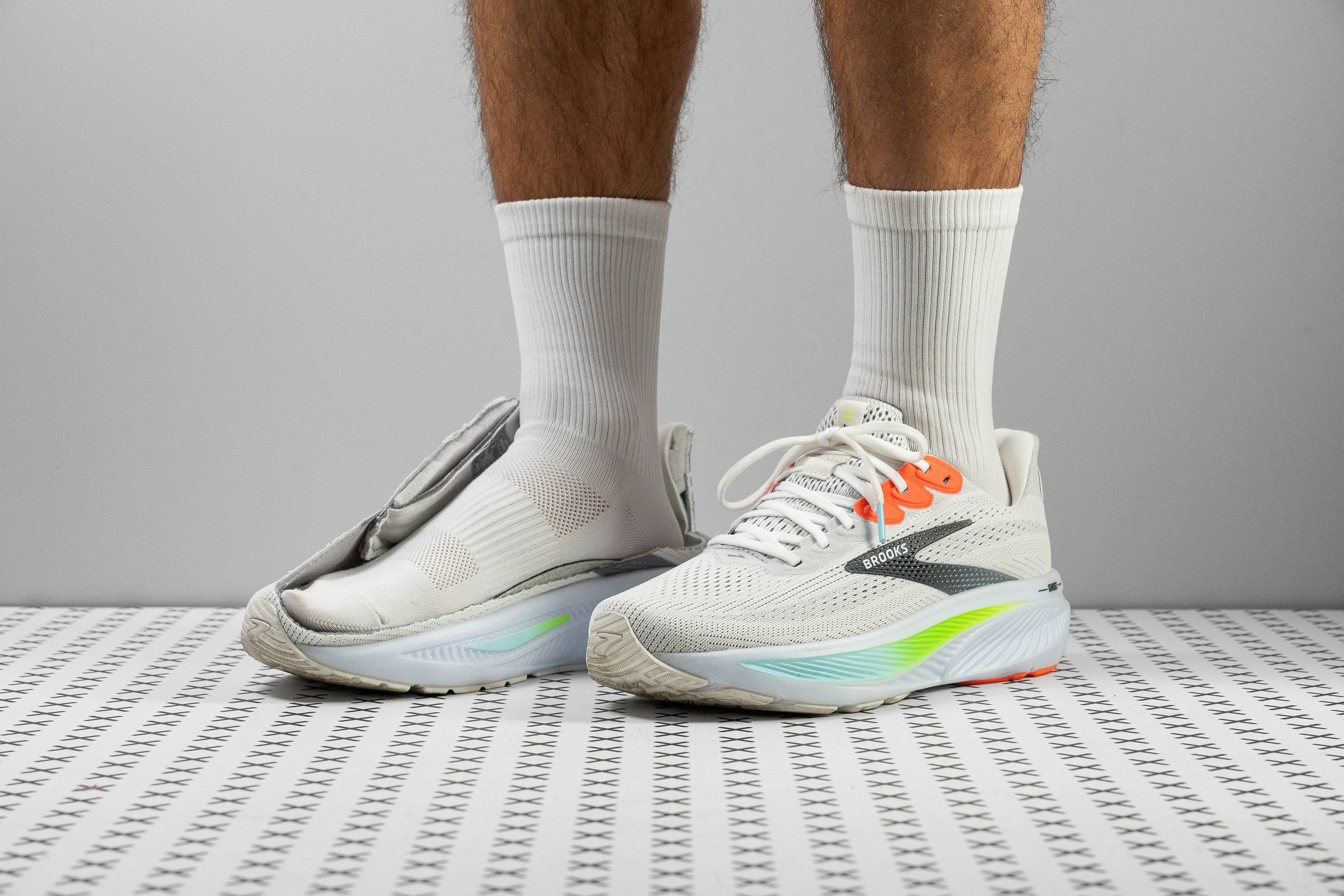Our verdict
Pros
- Exceptionally comfortable upper
- Impressive outsole durability
- Softest and most cushioned Ghost to date
- Very stable for a neutral shoe
- Still a flexible and natural ride
- Doubles for daily wear
- New drop adds versatility
- Traction is even better than before
- Improved aesthetics
Cons
- Outdated foam tech with low energy return
- Non-gusseted tongue despite price hike
- Still heavy
- Tapered toebox
Audience verdict
Comparison
The most similar running shoes compared
+ + Add a shoe | |||||
|---|---|---|---|---|---|
| Audience score | N/A | 84 Good! | 85 Good! | 86 Good! | |
| Price | $150 | $160 | $150 | $165 | |
| Pace | Daily running | Daily running | Daily running | Daily running | |
| Arch support | Neutral | Neutral | Neutral | Neutral | |
| Weight lab Weight brand | 10.2 oz / 289g 10.1 oz / 286g | 9.1 oz / 257g 10 oz / 283g | 10.8 oz / 305g 10.9 oz / 309g | 10.3 oz / 293g 10.2 oz / 289g | |
| Drop lab Drop brand | 10.4 mm 10.0 mm | 10.5 mm 10.0 mm | 9.9 mm 6.0 mm | 10.3 mm 10.0 mm | |
| Strike pattern | Heel | Heel | HeelMid/forefoot | Heel | |
| Size | Slightly large | True to size | True to size | True to size | |
| Midsole softness | Soft | Balanced | Balanced | Soft | |
| Difference in midsole softness in cold | Normal | Normal | Normal | Normal | |
| Toebox durability | Decent | Decent | Decent | Decent | |
| Heel padding durability | Good | Decent | Good | Good | |
| Outsole durability | Good | Good | Good | Good | |
| Breathability | Moderate | Warm | Breathable | Breathable | |
| Width / fit | Medium | Medium | Medium | Medium | |
| Toebox width | Narrow | Medium | Medium | Medium | |
| Stiffness | Flexible | Flexible | Moderate | Flexible | |
| Difference in stiffness in cold | - | Small | Small | Small | |
| Torsional rigidity | Moderate | Moderate | Stiff | Stiff | |
| Heel counter stiffness | Stiff | Moderate | Stiff | Moderate | |
| Heel lab Heel brand | 36.2 mm 36.5 mm | 36.9 mm 38.0 mm | 39.0 mm 39.0 mm | 38.5 mm 38.0 mm | |
| Forefoot lab Forefoot brand | 25.8 mm 26.5 mm | 26.4 mm 28.0 mm | 29.1 mm 33.0 mm | 28.2 mm 28.0 mm | |
| Widths available | NarrowNormalWideX-Wide | Normal | NormalWideX-Wide | NormalWideX-Wide | |
| Orthotic friendly | ✓ | ✓ | ✓ | ✓ | |
| Season | All seasons | All seasons | SummerAll seasons | SummerAll seasons | |
| Removable insole | ✓ | ✓ | ✓ | ✓ | |
| Ranking | #339 Bottom 5% | #232 Bottom 35% | #209 Bottom 41% | #186 Bottom 47% | |
| Popularity | #20 Top 6% | #114 Top 32% | #8 Top 3% | #14 Top 4% |
Who should buy
We fully tested the Brooks Ghost 17 in the lab and on the road, and here’s what we think:
- Fans who buy a Ghost every year can confidently proceed again, as it follows the same proven formula with only minor refinements.
- Those seeking a touch more cushioning will appreciate the added stack height and lower (but still high) drop from previous models.
- For runners wanting a single, durable shoe for two or three short runs per week and casual everyday wear, this shoe is ideal.
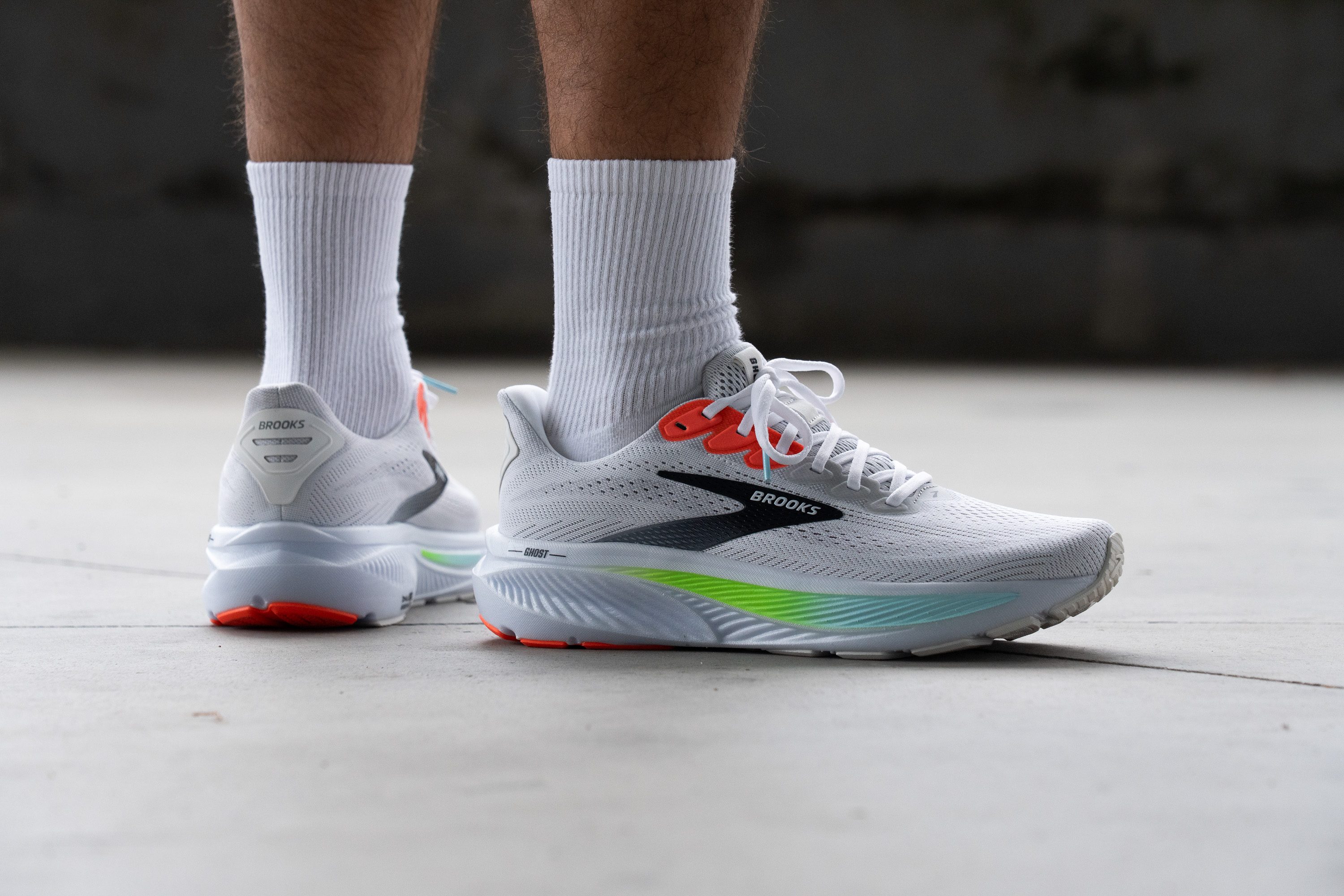
Who should NOT buy
We found in the lab that the DNA Loft v3 foam of the Brooks Ghost 17 lacks energy return, and from our perspective, that’s a clear drawback. A few years ago, this might have been acceptable, but now most brands deliver highly-responsive daily trainers, and this one simply doesn’t keep up. For those seeking bounce, we suggest checking the HOKA Mach 6 or the Nike Pegasus Plus.
We also think the Ghost 17 isn’t the best fit for runners with wide feet, as its tapered toebox may feel restrictive. From our experience, shoes like the Altra Experience Flow 2 or the Adidas Supernova Rise 2 provide a roomy design while also delivering a more energetic foam as a side benefit.
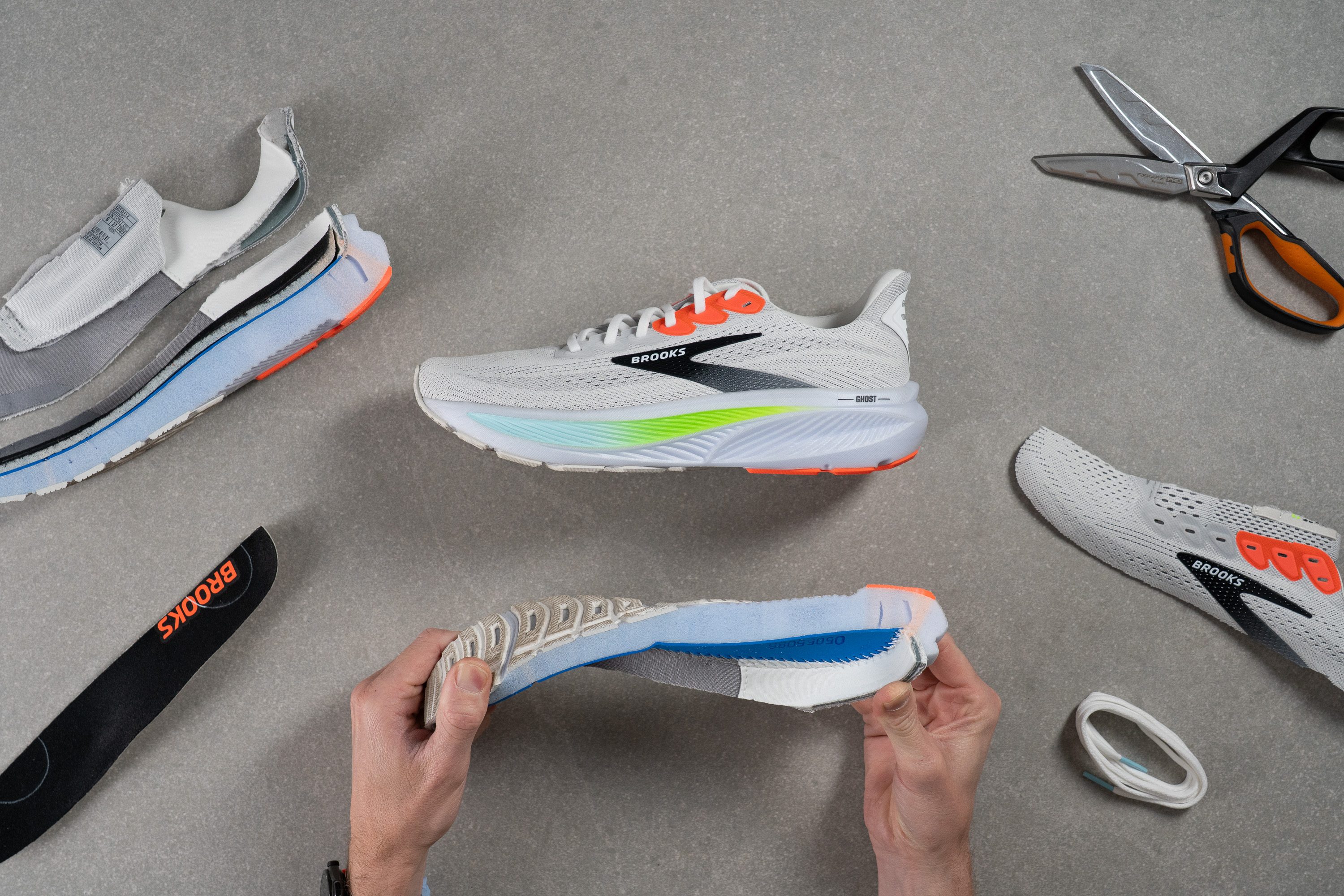
Cushioning
Shock absorption
NewThe running experience in the Ghost 17 varies noticeably in shock absorption depending on your strike pattern.
Our lab results show 140 SA in the heel and 100 SA in the forefoot, indicating decent overall cushioning. However, forefoot strikers may find it slightly lacking, especially depending on body type or running distance.

| Ghost 17 | 140 SA |
| Average | 129 SA |
Energy return
NewSince the running shoe foam revolution began, Brooks has always seemed to be chasing the leaders but never quite reaching their level. In fact, their first PEBA-based shoe (Hyperion Elite 4 PB) only appeared a few months ago. For context, Nike was selling a real supershoe back in 2017 and put ZoomX in training shoes more than 4 years ago.
The nitrogen-infused DNA Loft v3 was once an interesting foam, but 53.8% energy return in the heel and 56.5% in the forefoot simply feel underwhelming right now. Even though this might not matter much for casual runners, Brooks now needs to move beyond its outdated formulas toward something better.
| Ghost 17 | 53.8% |
| Average | 58.5% |
Heel stack
Every Ghost update brings a few extra millimeters of stack height, and version 17 is no exception. It adds 1.1 mm over its predecessor, reaching 36.2 mm under the heel, and slowly edging toward maximalist territory.
When will it stop? We doubt Brooks will push the Ghost past 40 mm, especially with the Max version already in the lineup, but time will tell.

| Ghost 17 | 36.2 mm |
| Average | 34.7 mm |
Forefoot stack
Due to the high-drop design of the Ghost, the forefoot is noticeably thinner, reaching just 25.8 mm.
This setup allows plenty of ground feel, especially for heavier runners or those occasionally picking up the pace. And while max-stack shoes often mute sensations, some runners still prefer this ground-connected feel.

| Ghost 17 | 25.8 mm |
| Average | 26.1 mm |
Drop
One of the defining traits of the Ghost is its steep heel-to-toe drop, and that remains part of its identity. However, Brooks slightly adjusted the geometry by reducing the offset by 2 mm, so basically there's more foam than before in the forefoot.
In version 17, we measured a 10.4 mm drop, which still makes it particularly suitable for heel strikers thanks to its forward-rolling design.
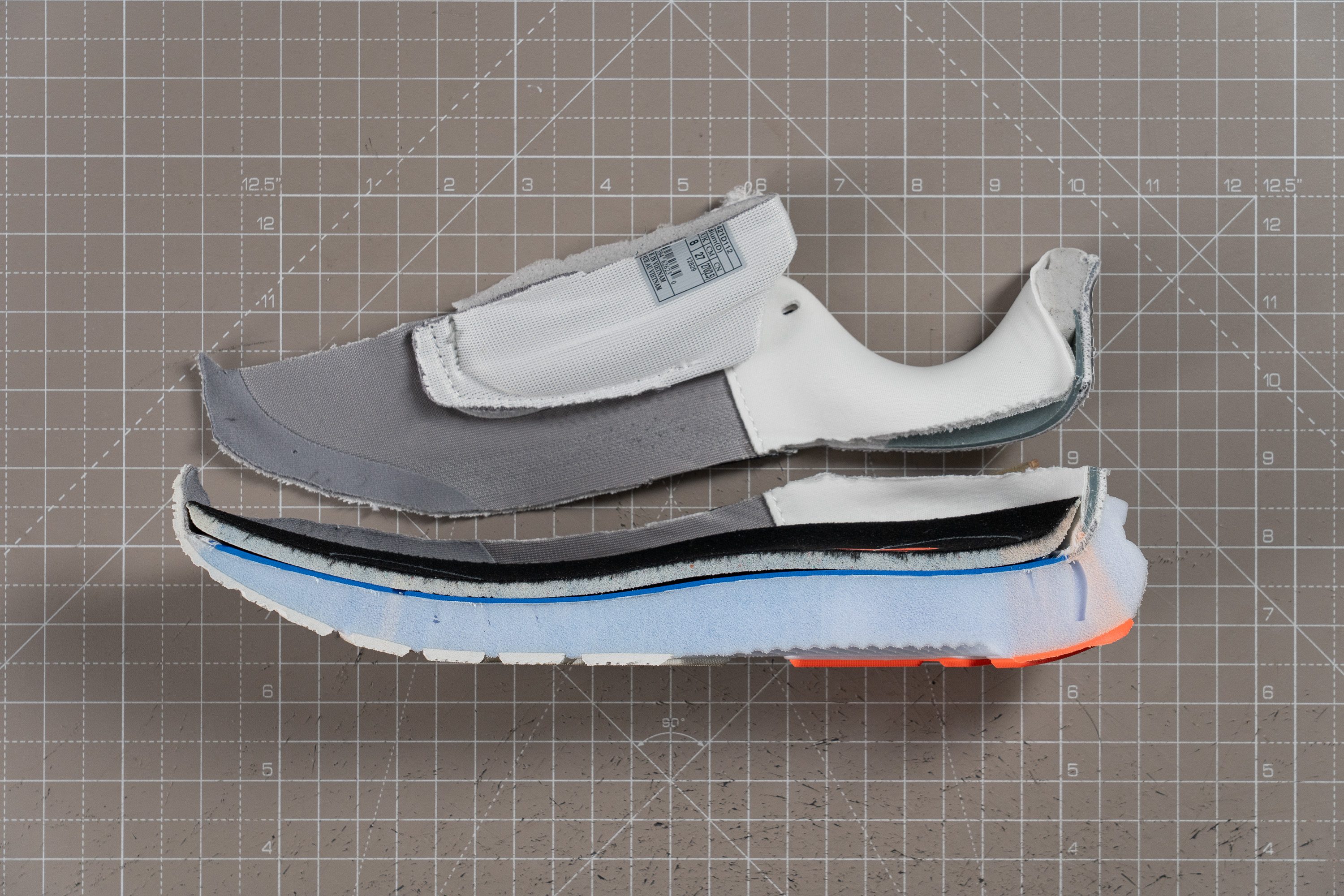
| Ghost 17 | 10.4 mm |
| Average | 8.6 mm |
Midsole softness
The Ghost isn’t immune to modern running-shoe trends, which means leaning toward a softer midsole or higher stack height each year. In version 17, we tested and discovered the softest DNA Loft v3 foam yet in this line, measuring only 17.0 HA.
While that’s still far from ultra-plush territory, we think the Ghost should stay focused on its dependable and stable identity. In our view, Brooks should prioritize a more energy-rich foam instead of chasing extra stack or a pillowy feel.
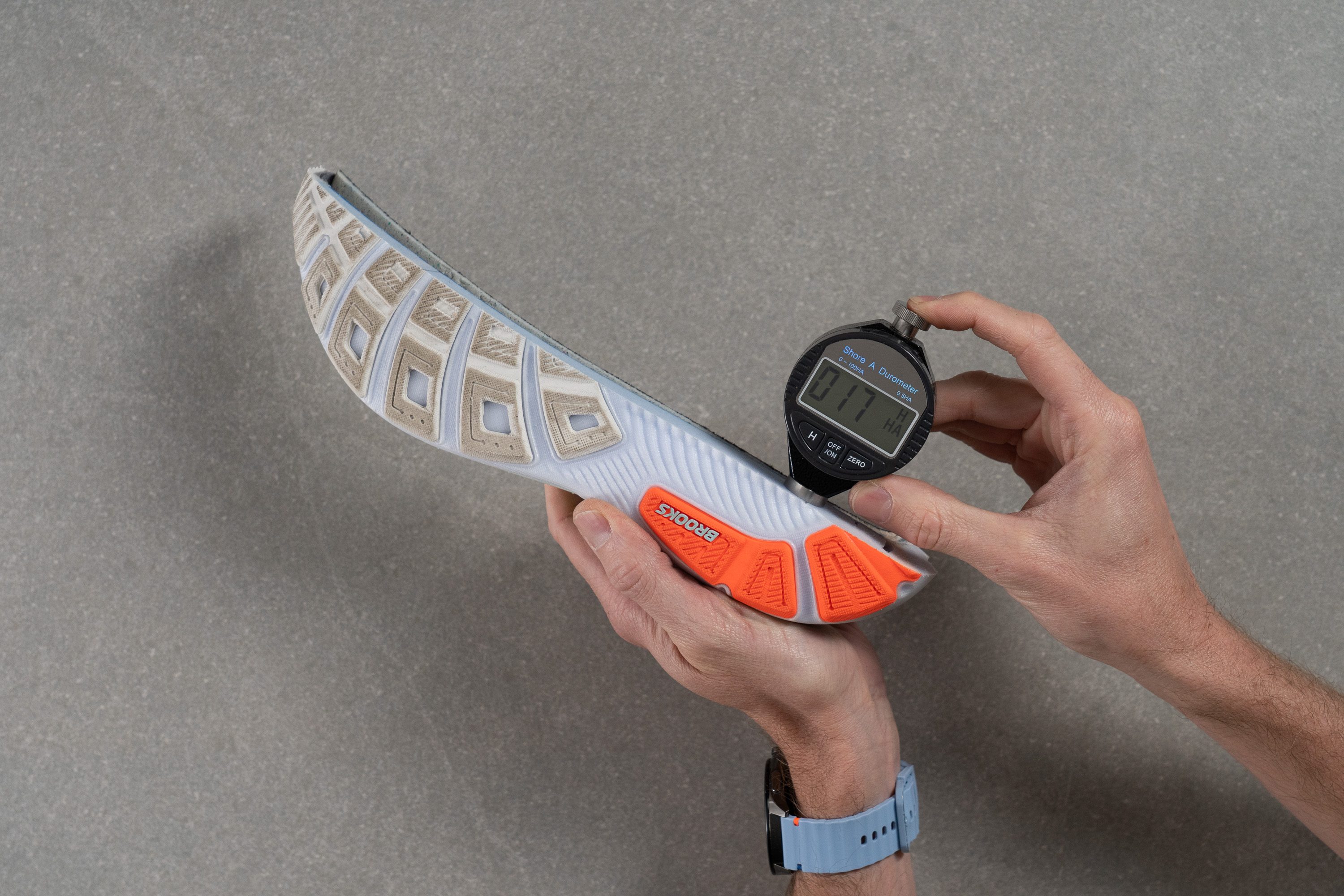
| Ghost 17 | 17.0 HA |
| Average | 20.5 HA |
Rocker
The Ghost 17 features a traditional rocker shape that feels natural and smooth. Its moderate stack height and high flexibility create a simple transition from heel to toe, typical of a classic daily trainer design rather than a modern, aggressively rockered shoe.
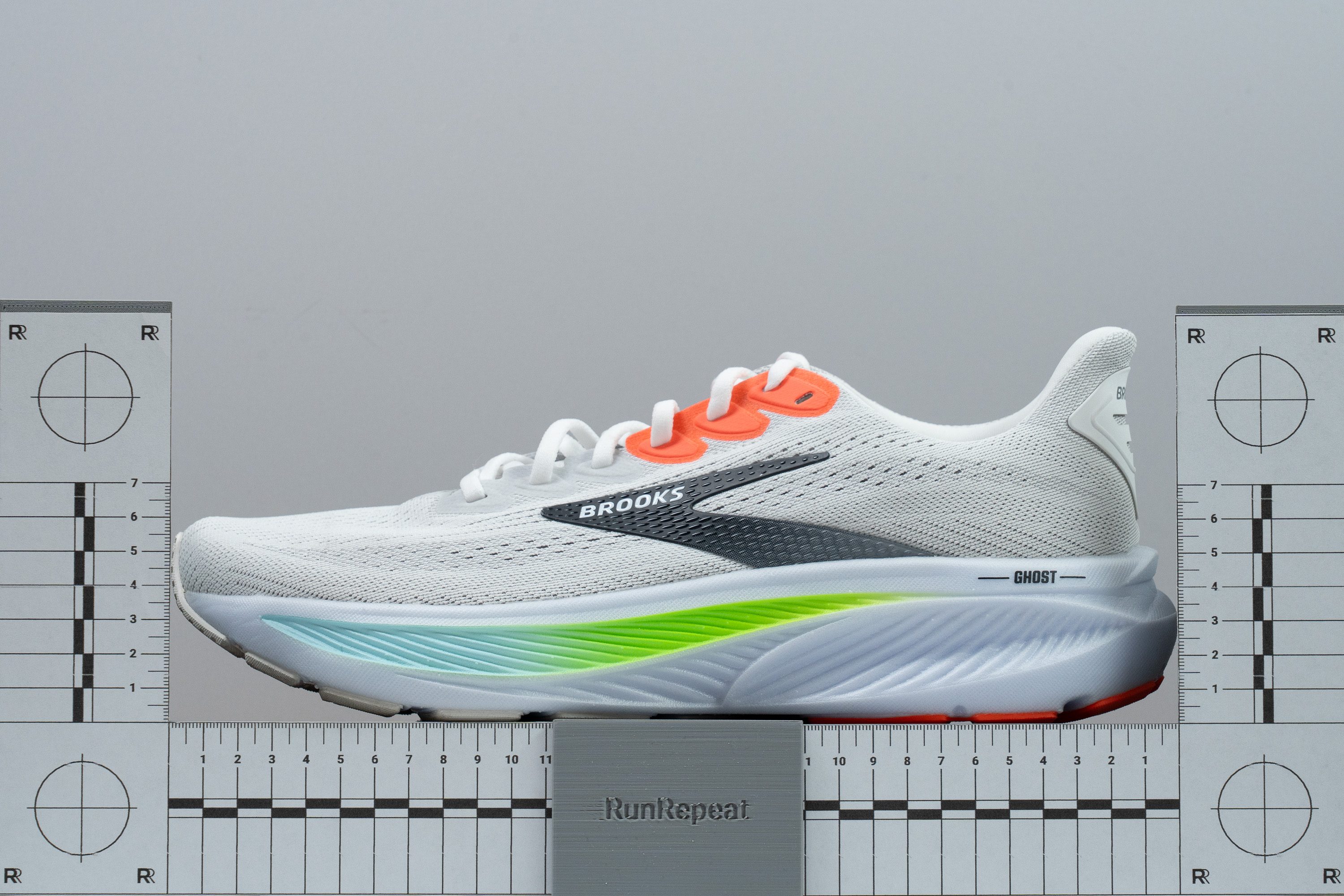
Size and fit
Size
Brooks Ghost 17 fits slightly large (16 votes).
Width / Fit
With the Ghost 17, we discovered that Brooks kept a similar fit to previous models during our test runs. To get precise numbers, we created a gel mold of the interior to take ultra-accurate measurements, allowing us to compare it against every other shoe we’ve reviewed.
The first reading came out very average at 95.2 mm, meaning it should feel similar to many comfort-driven daily trainers. But let’s take two more measurements.
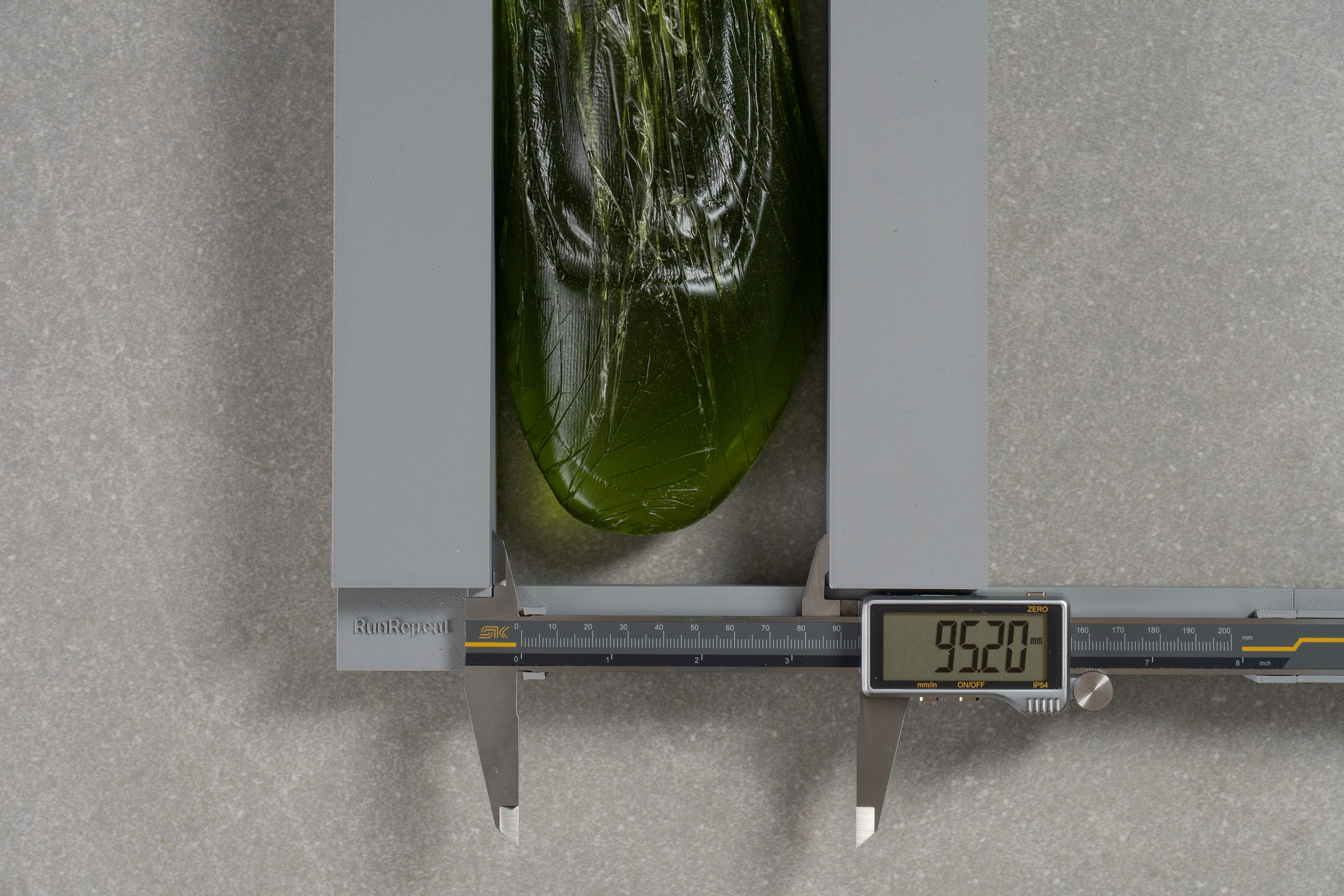
| Ghost 17 | 95.2 mm |
| Average | 95.2 mm |
Toebox width
The second measurement makes the Ghost 17 less appealing for runners with wide feet, as its 69.6 mm toebox feels too tapered to allow proper toe splay. However, it suits those with narrower feet perfectly.
That said, one strong advantage of the Brooks Ghost series is its wide range of available widths. Depending on the country, runners can choose from up to four options (B, D, 2E, and 4E), which can easily solve most fit issues.

| Ghost 17 | 69.6 mm |
| Average | 73.3 mm |
Toebox height
The toebox features a low-volume design, which we clearly noticed while testing the shoe.
Our measurements later confirmed this impression, showing just 24.8 mm of height.
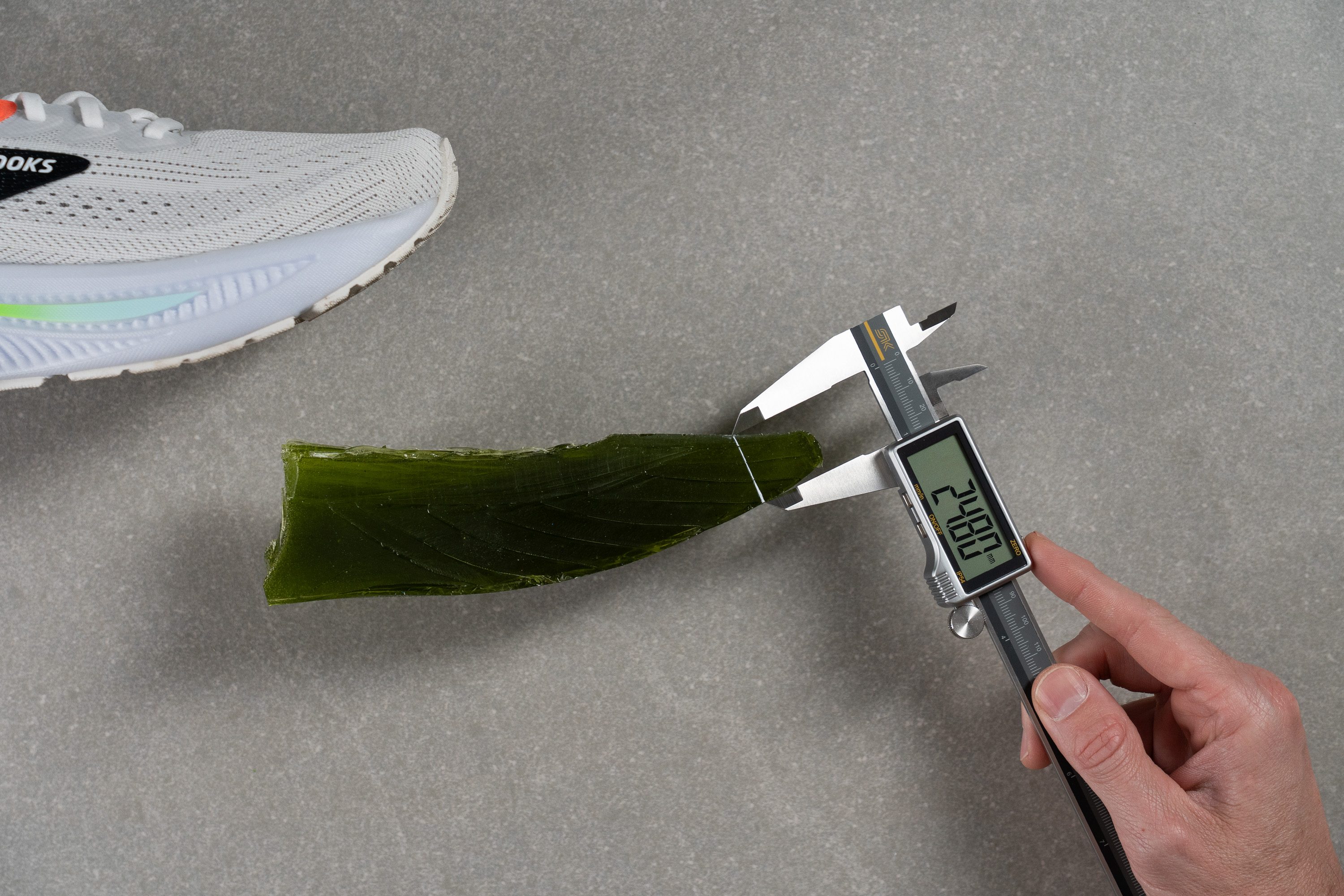
| Ghost 17 | 24.8 mm |
| Average | 27.1 mm |
Traction / Grip
Traction test
NewEvery update is welcome, and the Ghost 17 brings a slight boost to what was already dependable traction in its predecessor. It improves from 0.48 to 0.55 while maintaining strong grip on wet surfaces, making it a reliable all-rounder for casual runners seeking a single, no-frills shoe.
| Ghost 17 | 0.55 |
| Average | 0.47 |
Outsole design
NewThe Ghost 17’s outsole offers solid rubber coverage but includes more exposed foam than the Ghost 16, though the foam is still more protected than in most modern daily trainers. The forefoot displays rectangular and square rubber segments in curved rows, now with larger cutouts that can trap small rocks if you run on gravel roads. And fortunately, the deep flex grooves remain, helping to preserve the shoe’s flexibility.
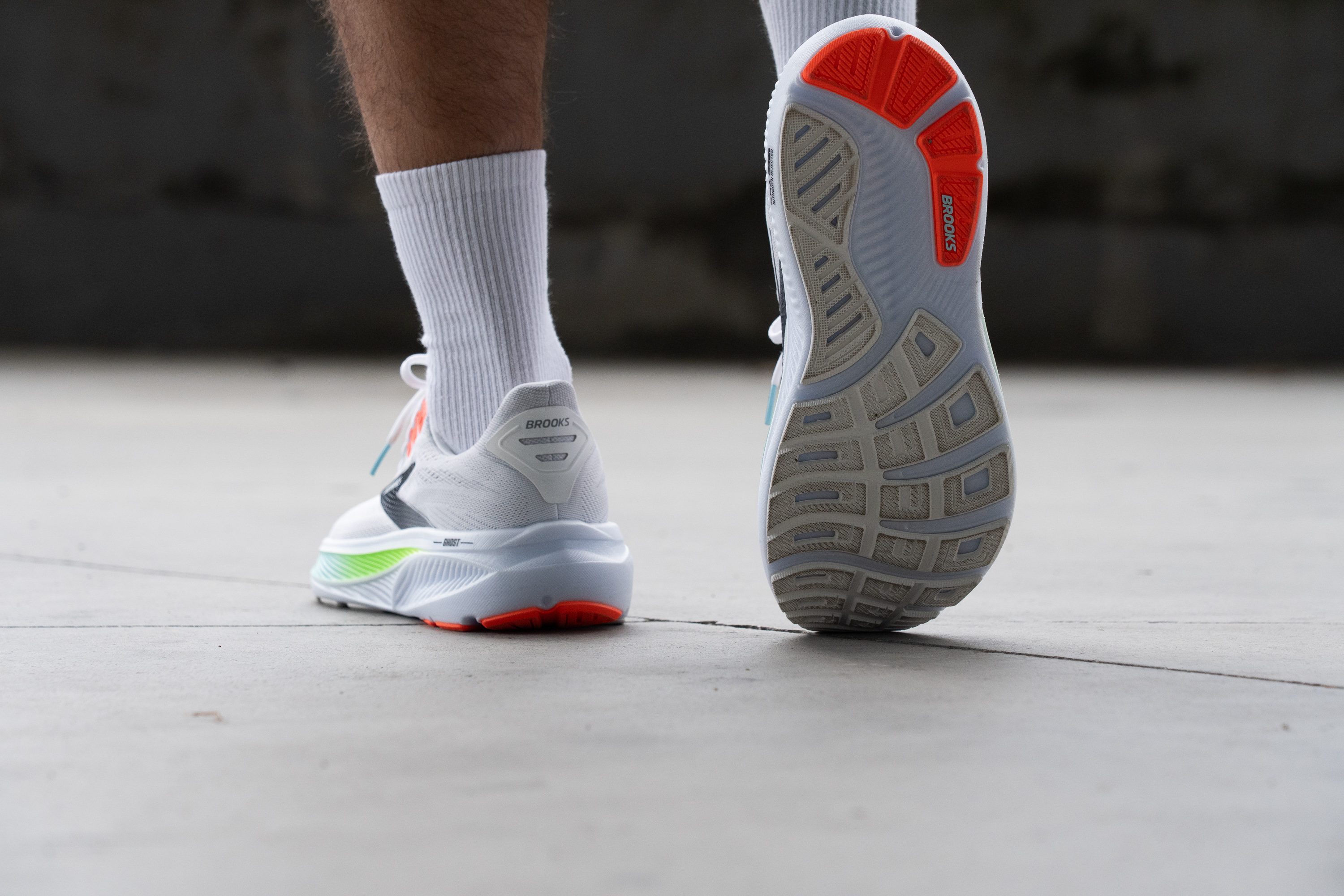
Flexibility / Stiffness
We just mentioned flexibility as one of the Ghost’s defining traits, since its easy-bending nature enhances comfort for daily wear and daily runs. Version 17 remains highly flexible at just 10.9N, making it a great option for runners who seek that feeling underfoot.
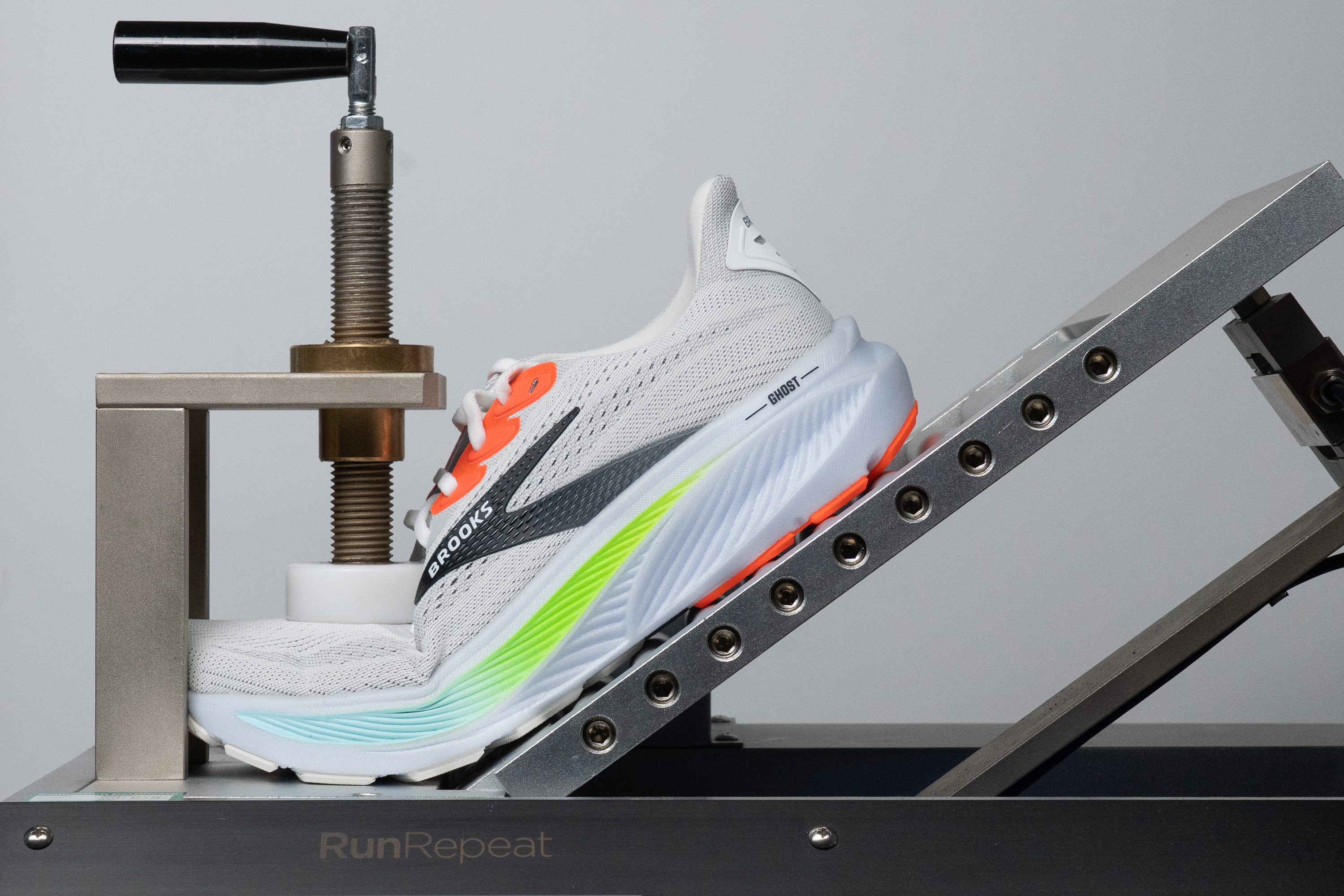
| Ghost 17 | 10.9N |
| Average | 15.1N |
Weight
It’s time for Brooks to cut down the weight of the Ghost, as version 17 tips the scale at 10.2 oz (289g). We found this far too heavy for a daily trainer released in 2025, no matter how comfort-driven its design might be. Other brands, like ASICS, are launching models such as the Novablast 5 with far more foam underfoot and a feather-light build, at a lower price!
In our opinion, Brooks could easily achieve a 10-20% reduction with some reasonable adjustments.
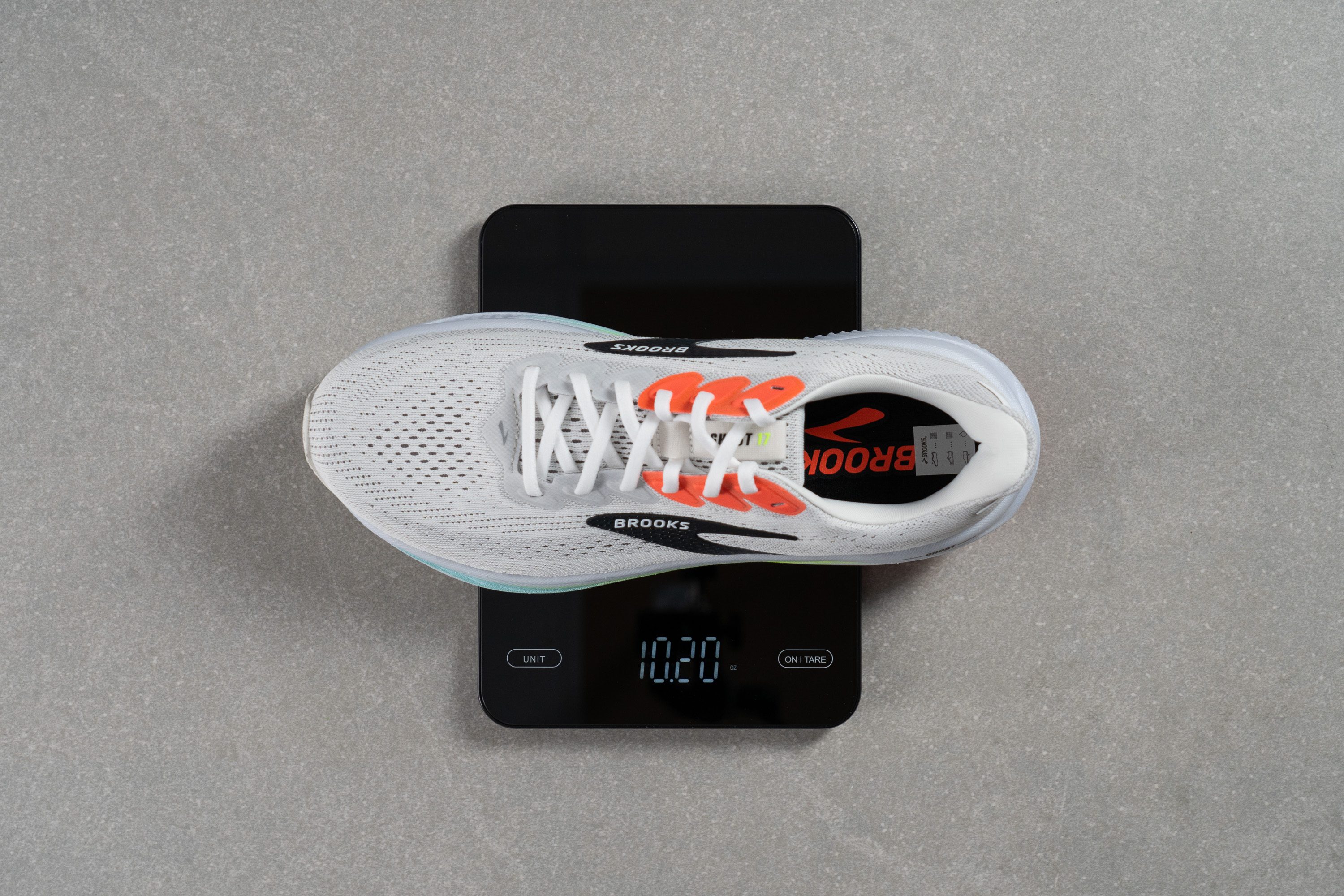
| Ghost 17 | 10.2 oz (289g) |
| Average | 9.3 oz (265g) |
Breathability
Even in the first few minutes of wearing the Brooks Ghost 17, we were impressed by how incredibly comfortable the upper feels. Brooks clearly put a lot of work into refining this part of the shoe, and the result is easy to notice right away.
However, this design comes with some trade-offs in ventilation and weight. The denser, thicker material makes the shoe less breathable, and we confirmed this during testing. It earned a 3/5 score in our ventilation test.
We think that the upper might fool some runners. It looks airy and open, which is why our lab testing is so valuable. Visual impressions can be misleading, and in this case, the real airflow performance doesn’t match the appearance.
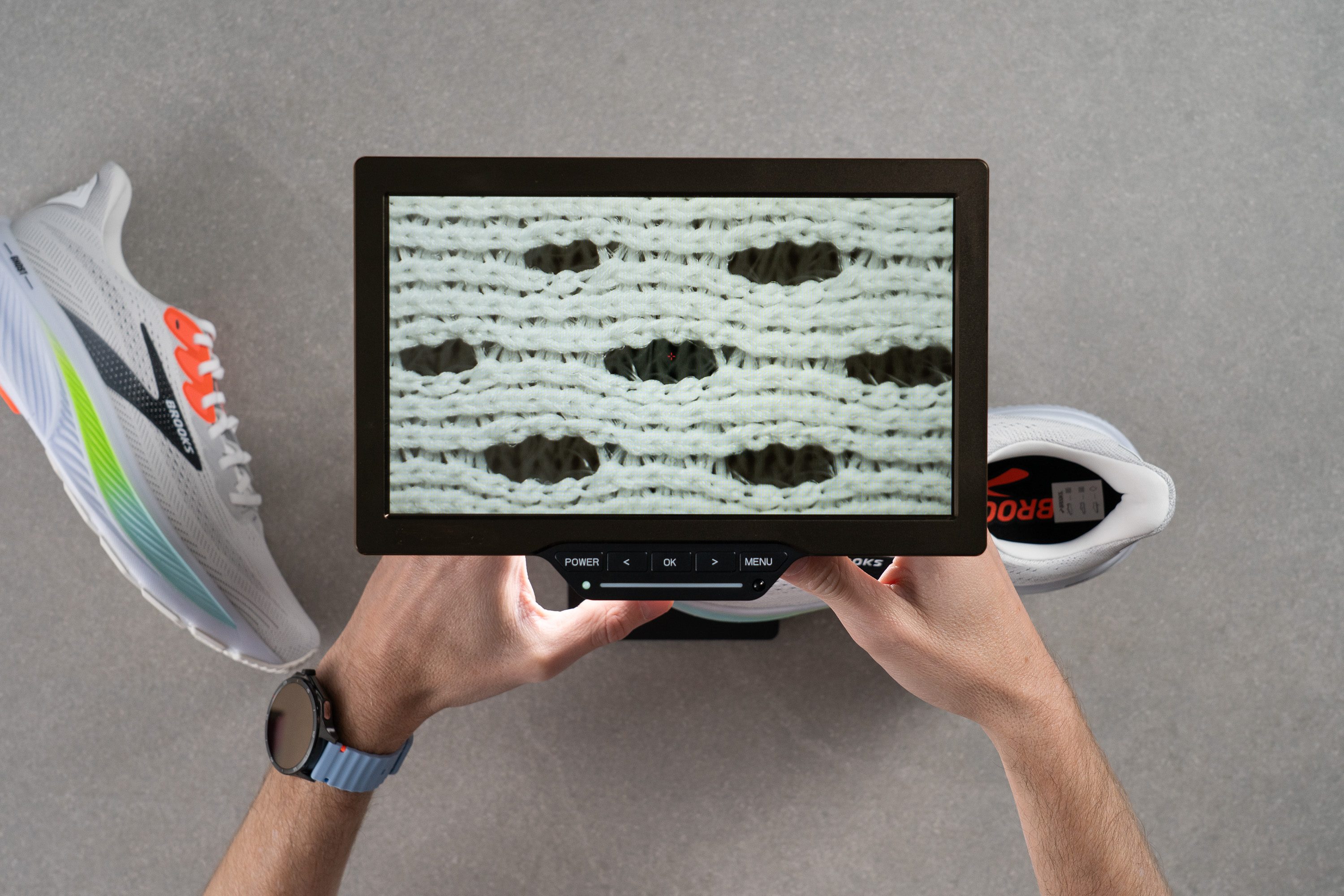
Using our digital microscope, we examined the upper up close and discovered a sandwich-style engineered mesh construction.
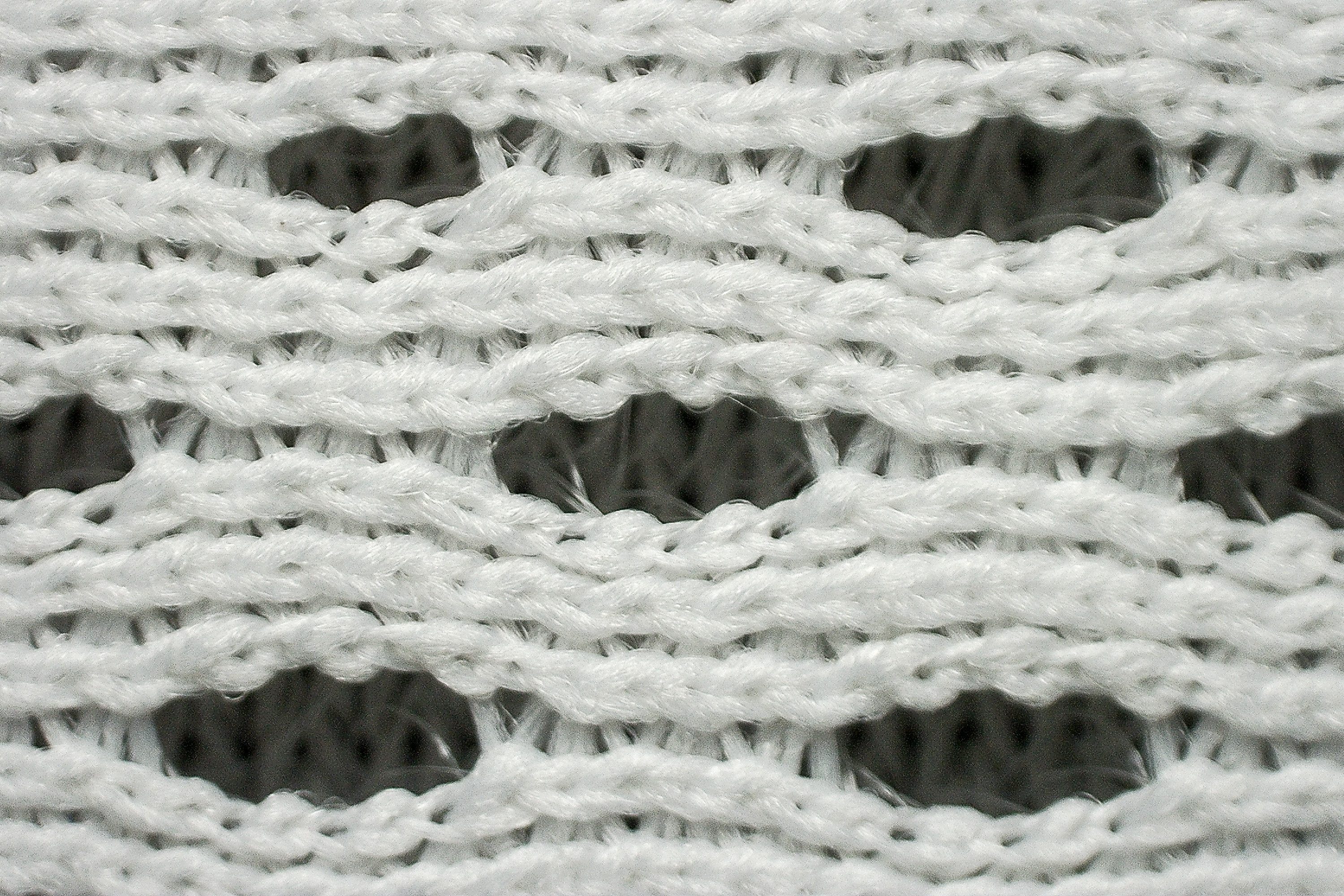
While the outer layer has visible perforations, an inner layer restricts airflow and traps more heat than expected.
Still, the upside is undeniable comfort. The heel and tongue are both generously padded, offering a plush feel. Unless you’re running in peak summer heat, the Ghost 17’s upper will likely deliver more benefits than drawbacks.
| Ghost 17 | 3 |
| Average | 3.7 |
Stability
Lateral stability test
A defining trait of the Ghost 17 is its solid stability for a neutral daily trainer, and we found that it maintains this secure feel regardless of footstrike.
However, you might wonder how that’s possible now that version 17 is both taller and softer, but Brooks solved it the same way many brands do: by widening the base.
Torsional rigidity
One of the simplest ways to boost stability is by making the shoe overly stiff, but we’re glad Brooks avoided that route. Scoring 3/5 in our test, the Ghost 17 feels nicely balanced and remains comfortable for easy runs and daily use.
| Ghost 17 | 3 |
| Average | 3.5 |
Heel counter stiffness
On the other hand, the heel counter is extremely rigid at 5 out of 5. Still, since it was the same in previous versions, we weren’t surprised this time. Thankfully, the generous foam padding around the heel keeps it comfortable and well-cushioned despite its firm structure.
| Ghost 17 | 5 |
| Average | 2.9 |
Midsole width - forefoot
We just mentioned the small adjustment that Brooks, like many other brands, makes to offset a higher stack height. It’s a simple idea: if the shoe grows vertically, it should also expand slightly horizontally.
Here’s a quick example:
- Brooks Ghost 16 forefoot stack height: 22.7 mm
- Brooks Ghost 17 forefoot stack height: 25.8 mm
- Brooks Ghost 16 forefoot midsole width: 115.0 mm
- Brooks Ghost 17 forefoot midsole width: 116.8 mm
Of course, this approach has its limits, as going too wide could alter the shoe’s core identity. Still, we believe Brooks could safely add another 1 or 2 mm in future updates without changing the Ghost’s signature ride.
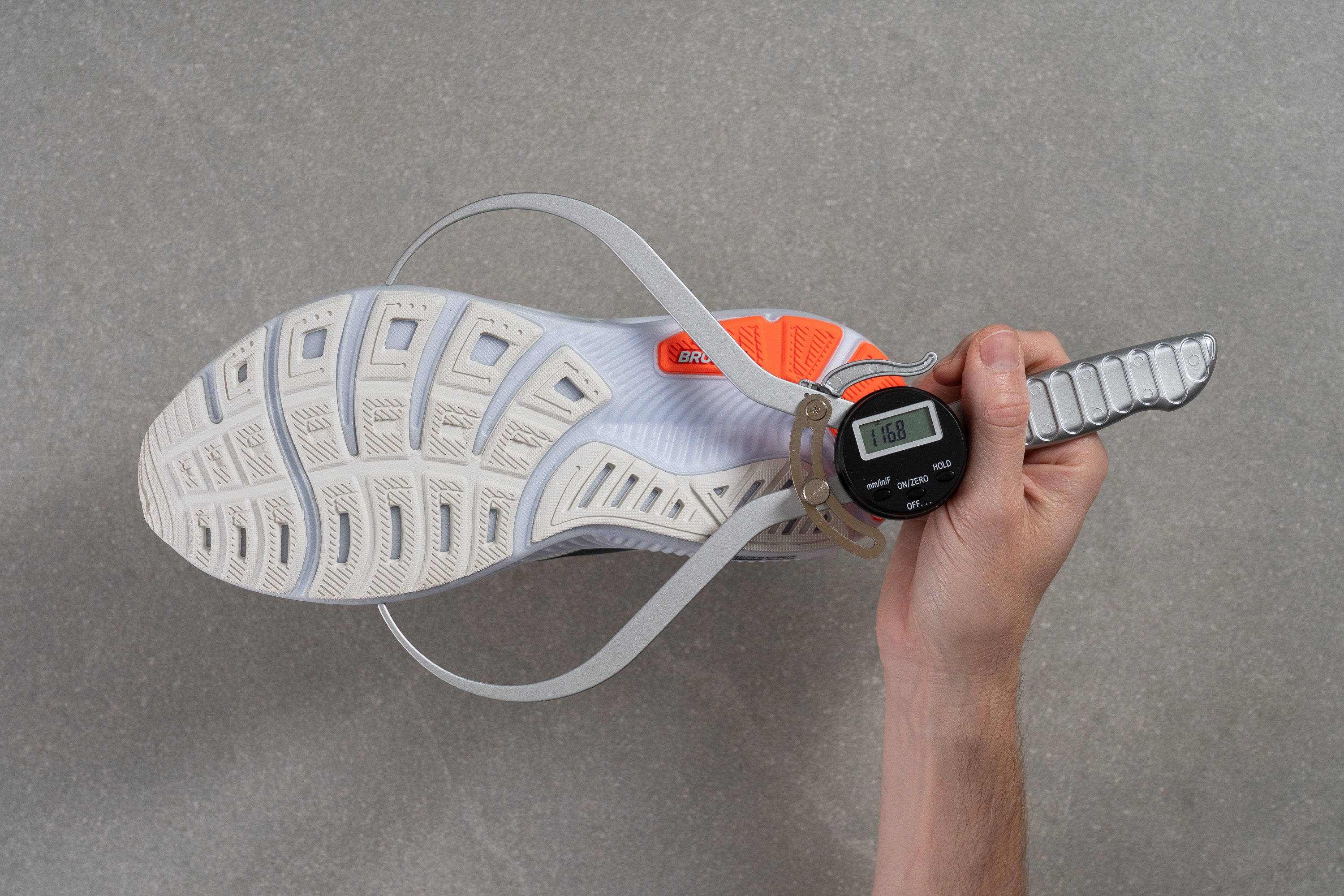
| Ghost 17 | 116.8 mm |
| Average | 114.4 mm |
Midsole width - heel
We found a similar update in the heel midsole width, which increased from 94.7 mm to 95.4 mm, now clearly above average and enhancing stability for heel strikers.
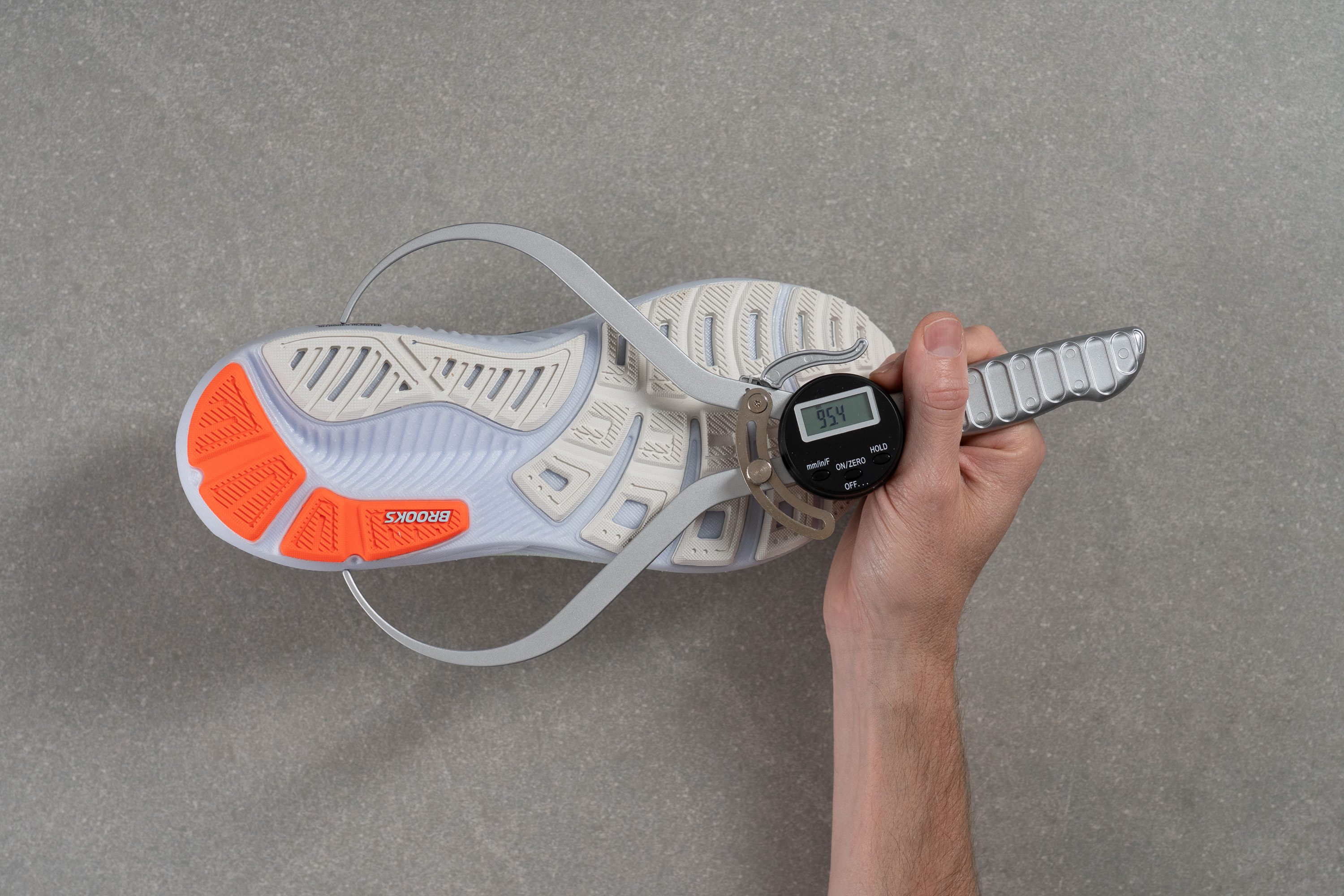
| Ghost 17 | 95.4 mm |
| Average | 90.8 mm |
Durability
Toebox durability
A downside of ultra-soft, comfort-focused uppers is that durability often takes a hit due to the delicate fabrics. However, the Ghost 17 performed surprisingly well in our Dremel test, scoring a solid 3 out of 5.
| Ghost 17 | 3 |
| Average | 2.6 |
Heel padding durability
The thick heel padding also performed excellently, earning a 4/5 in our test. That’s a great relief, as it gives us full confidence that early wear in this area won’t be an issue.
| Ghost 17 | 4 |
| Average | 3.4 |
Outsole durability
The outsole also delivered strong results in our durability test, showing only 0.8 mm of rubber wear. That’s also better than the average shoe and confirms its solid construction.
| Ghost 17 | 0.8 mm |
| Average | 1.0 mm |
Outsole thickness
To make the outsole nearly indestructible, Brooks chose to sacrifice some weight by adding a generous 4.0 mm of rubber thickness. It’s a reasonable trade-off, as runners expect the Ghost to be long-lasting, and for most buyers, durability matters far more than cutting a few extra grams.
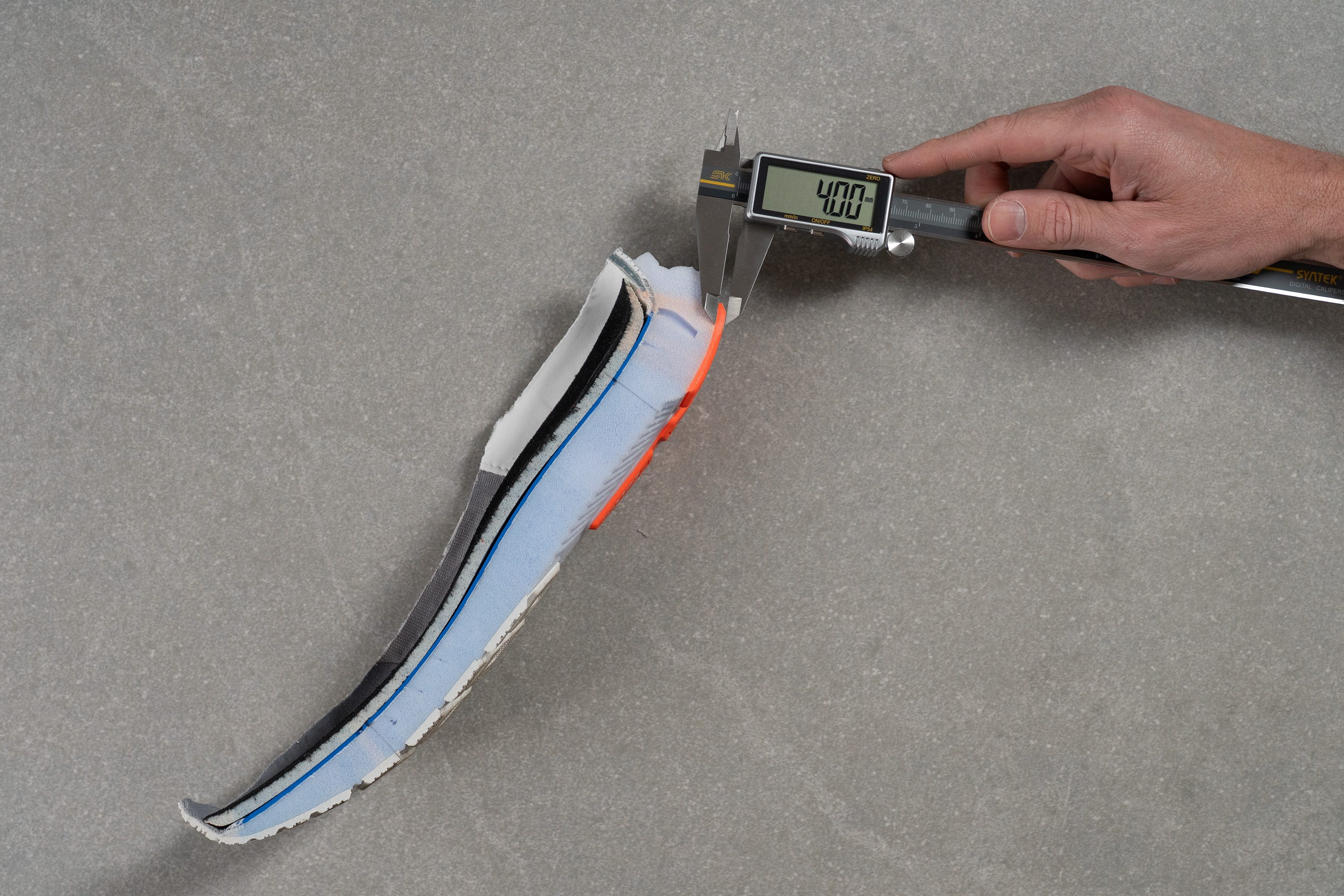
| Ghost 17 | 4.0 mm |
| Average | 3.2 mm |
Misc
Insole thickness
The insole is slightly thicker than average and also thicker than last year’s model, now measuring 5.7 mm.
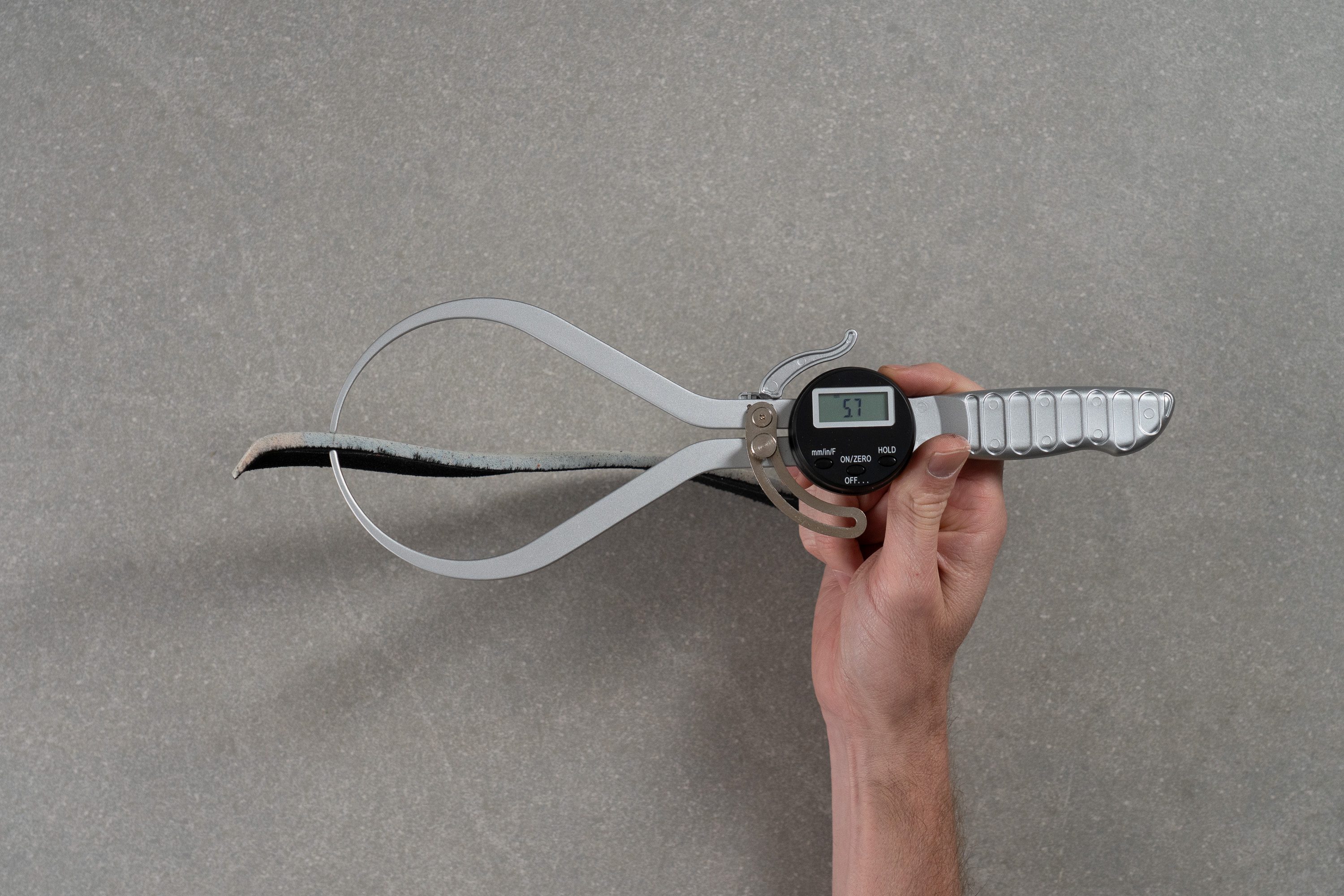
| Ghost 17 | 5.7 mm |
| Average | 4.5 mm |
Removable insole
If you prefer using your own orthotics, that’s no problem as you can take it out. Plus, given the low-volume toebox, some runners might even benefit from swapping in a thinner insert from another shoe for a bit more room.

| Ghost 17 | Yes |
Midsole softness in cold (%)
We tested and discovered that when exposed to freezing temperatures, DNA Loft v3 underperforms dramatically, becoming 39% firmer. Therefore, this foam loses its soft character in cold conditions, which is worth noting for runners expecting a consistently plush ride.

| Ghost 17 | 39% |
| Average | 25% |
Reflective elements
No reflective elements for the Ghost 17, so let’s hope Brooks adds them in the Ghost 18.

| Ghost 17 | No |
Tongue padding
The Ghost 17 features a classic, no-nonsense lacing system with six main eyelets and an additional top one designed for a secure heel lock. A central tongue loop helps keep the tongue perfectly aligned, preventing it from sliding sideways—a small but crucial detail as you'll see in a minute.
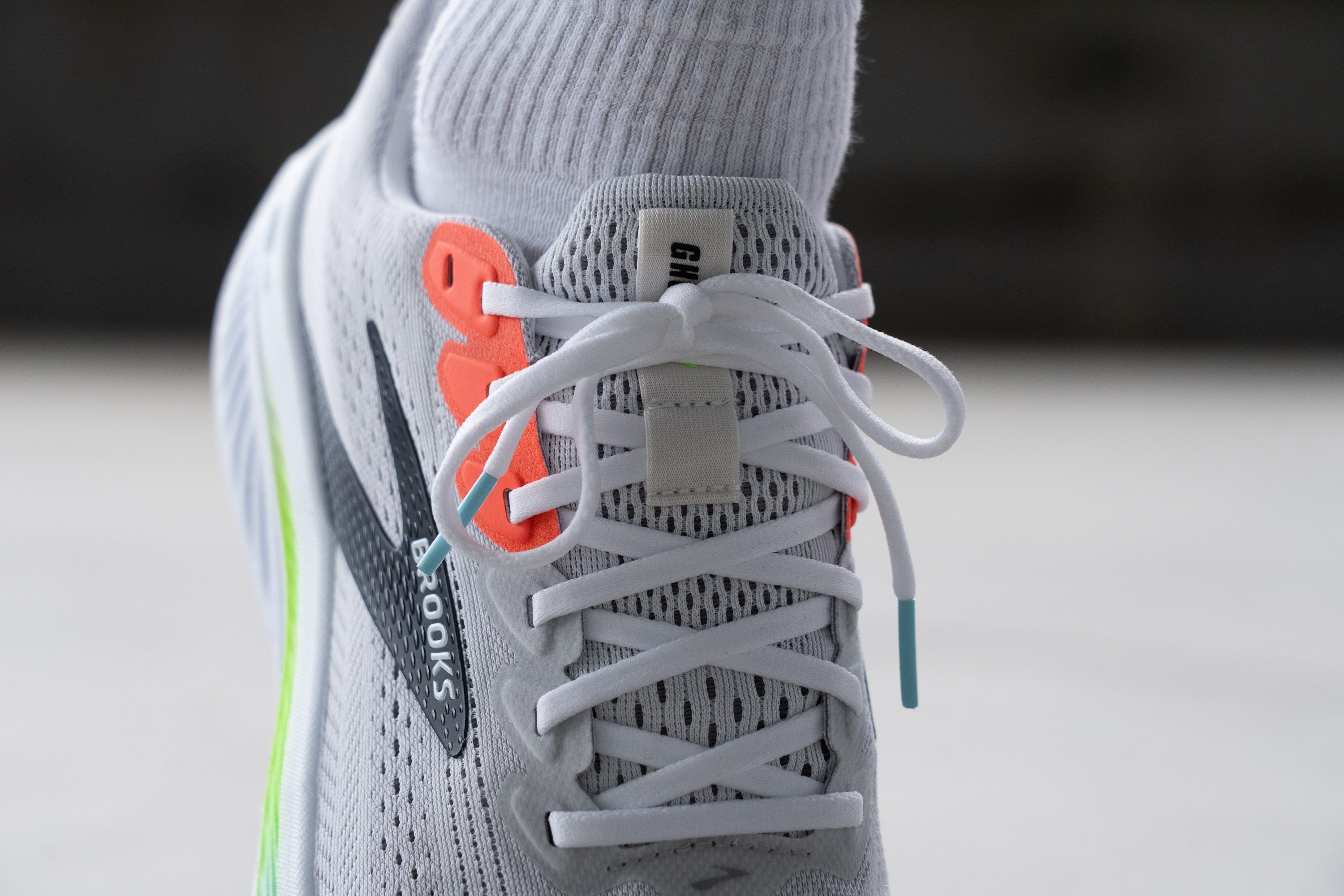
The tongue itself is superbly padded, measuring 9.0 mm in thickness, and covered with a soft mesh fabric. This ultra-cushioned design noticeably enhances step-in comfort and effectively reduces lace pressure, making it ideal for daily wear.
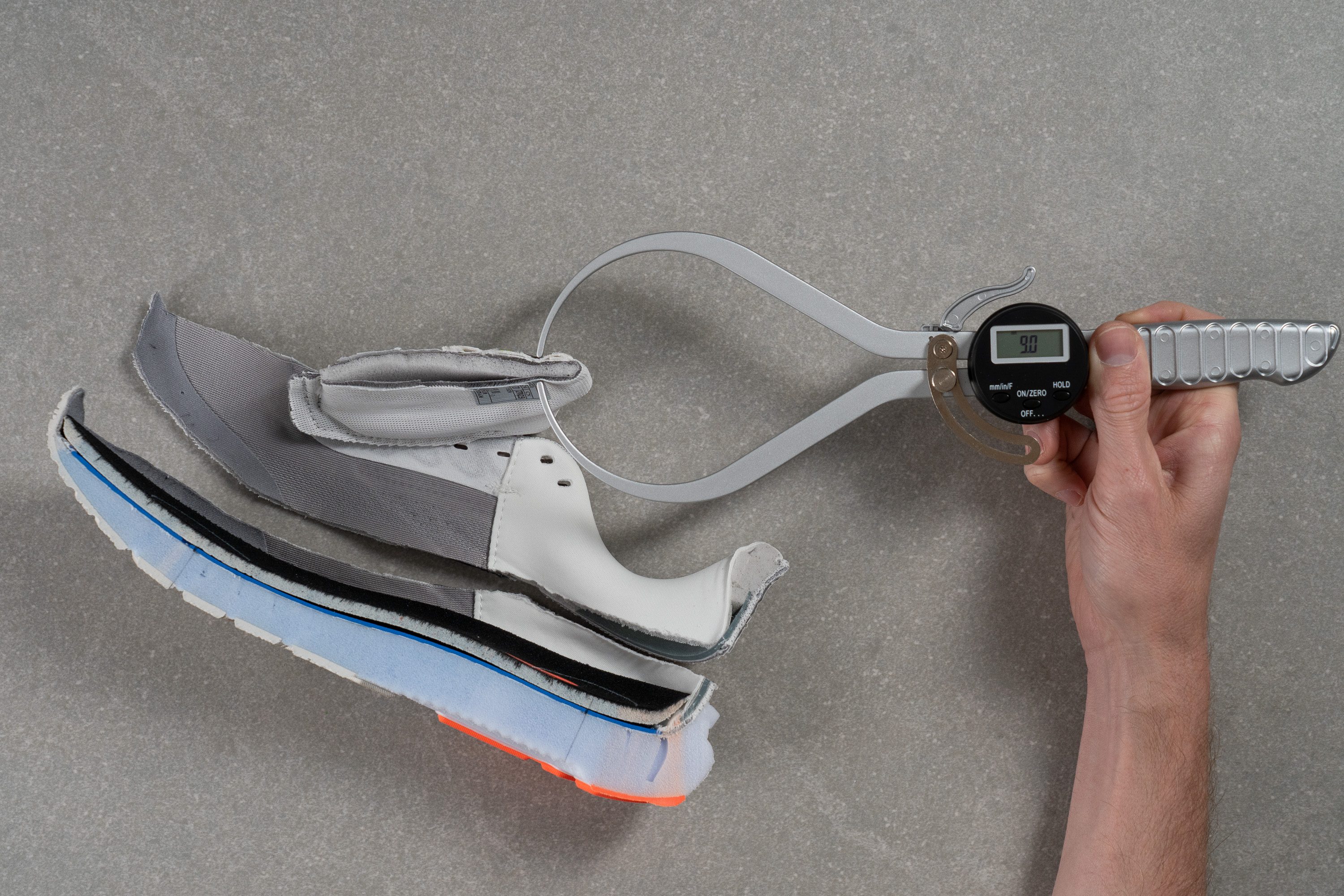
| Ghost 17 | 9.0 mm |
| Average | 5.8 mm |
Tongue: gusset type
The tongue loop is essential since the Ghost 17 features a non-gusseted tongue. And considering the price increase of this version, we genuinely expected Brooks to include a gusseted tongue.
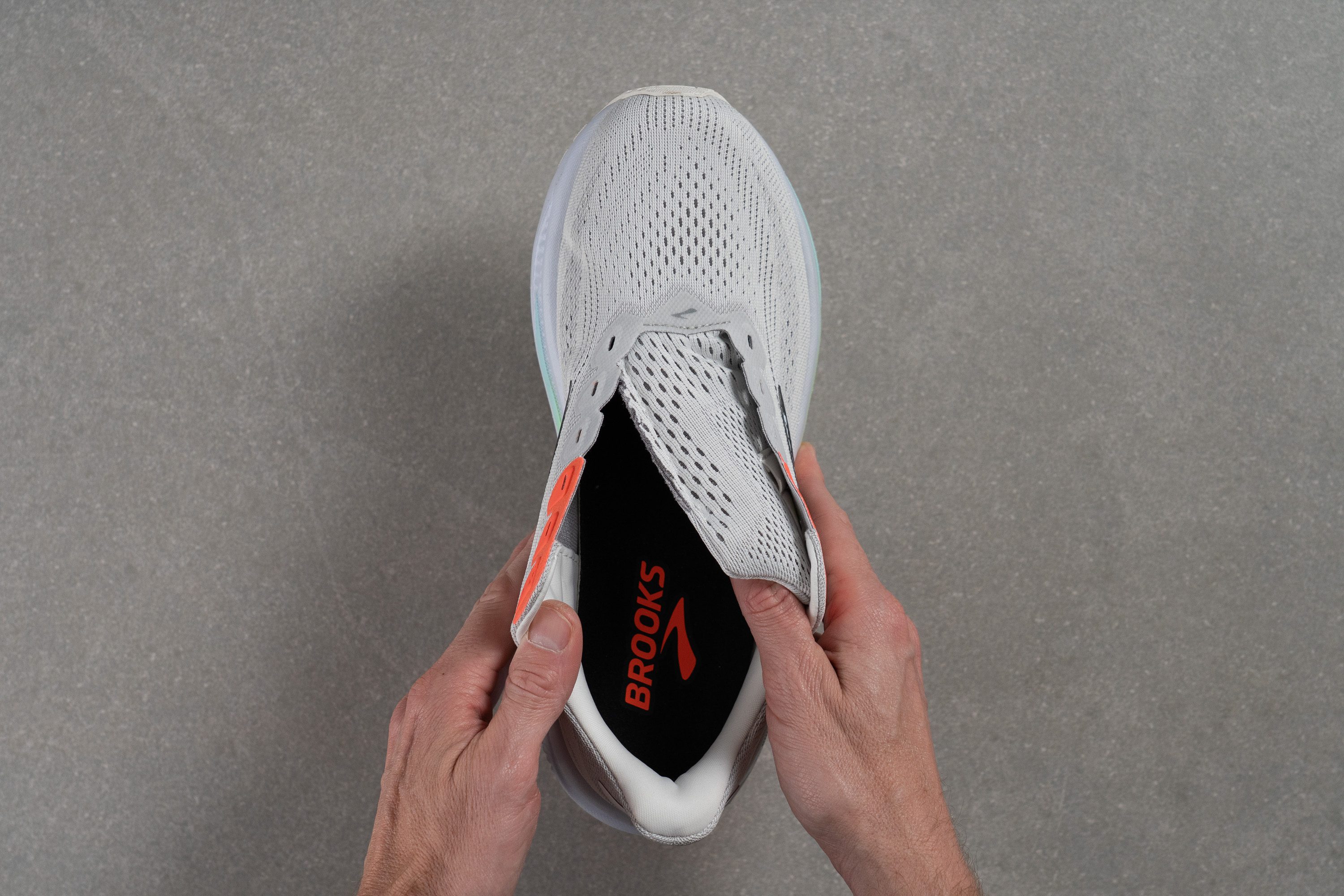
| Ghost 17 | None |
Price
The Ghost 17 arrives with a price bump that isn’t justified by its performance, and we believe serious runners will find it lacks strong value. However, for those wanting a dependable, comfort-first daily trainer with a long-lasting outsole, it remains a reasonable pick. Still, at this new price, it needs a lighter build and a new foam.
| Ghost 17 | $150 |
| Average | $150 |
Heel tab
The Ghost 17’s heel lacks a finger-loop tab, but it features a semi-rigid plastic overlay that reinforces the heel structure and subtly improves rearfoot stability. Additionally, this element helps the shoe maintain its shape over time.
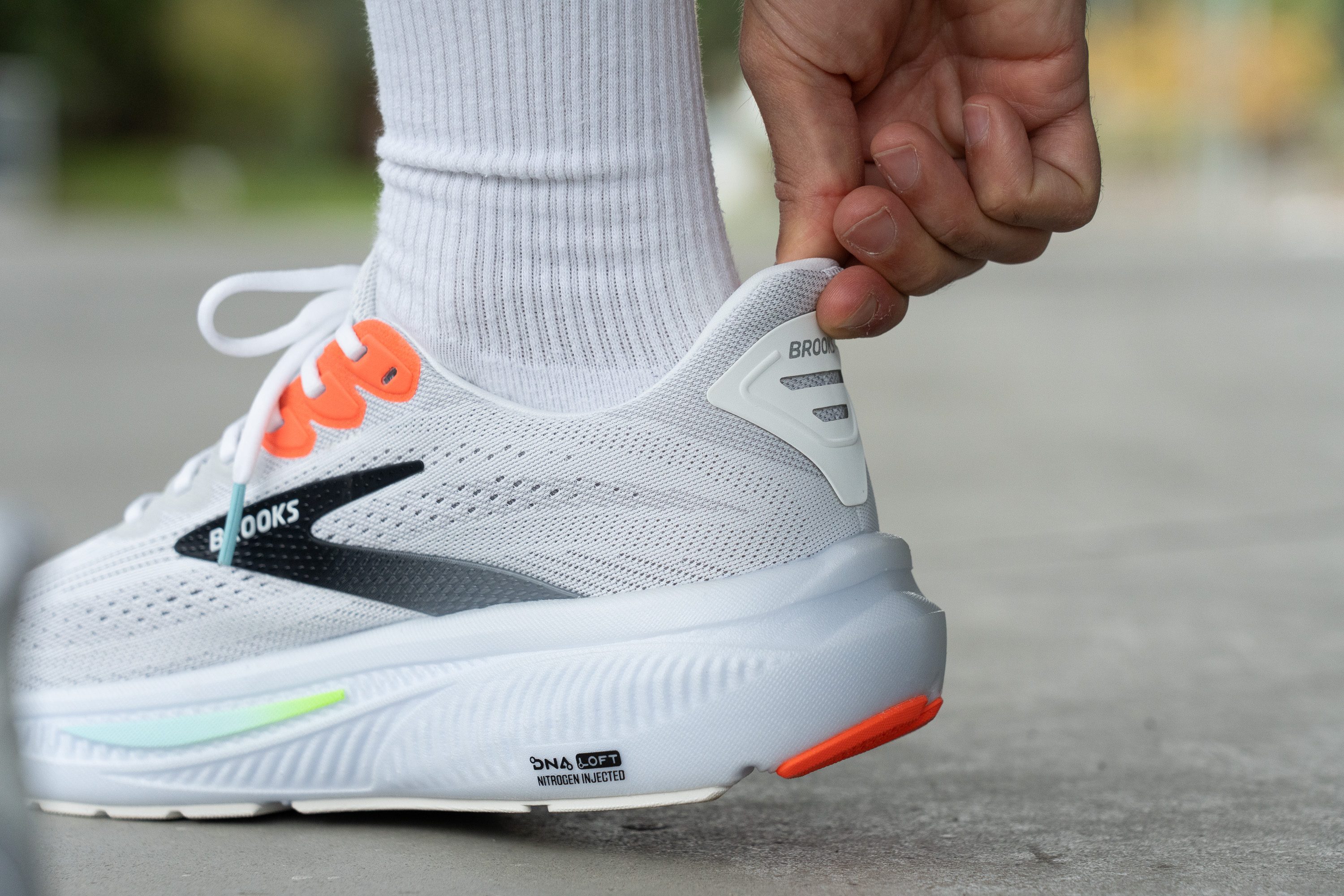
| Ghost 17 | None |

